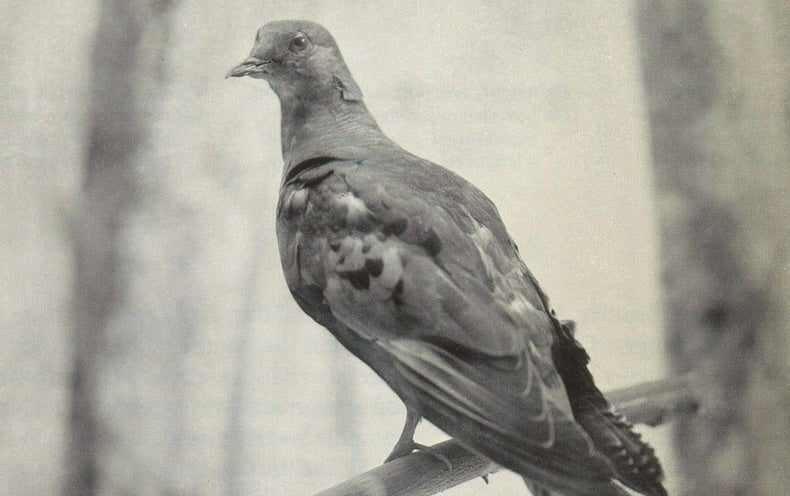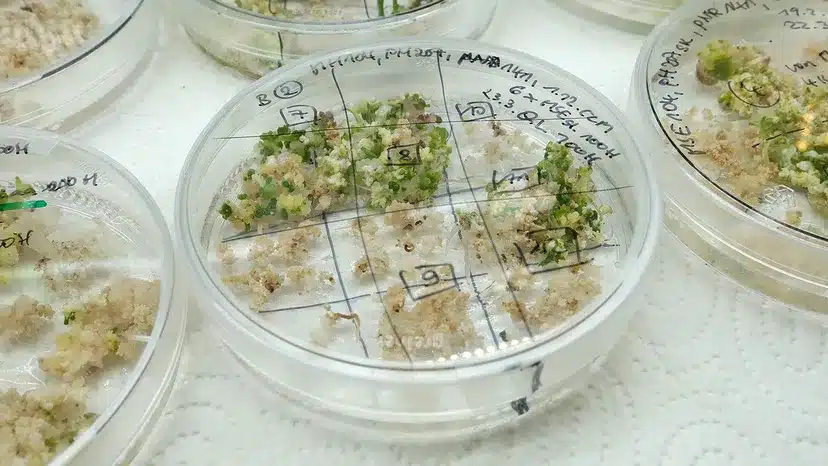Do you like mosquitoes? No, huh? This summer, a team from the University of California has developed a method to "hack" the sight of mosquitoesmaking it very difficult for them to find humans to suck blood. How did they do it? Using a genetic engineering tool known as CRISPR.
Often likened to a pair of “molecular scissors,” CRISPR uses specialized proteins called CAS to cut strands of DNA or RNA at precise locations. At those points you can then insert or remove a specific gene and voilà: modified organism. Yes, but what does it have to do with tomatoes?
And wait, now I tell you. CRISPR, you will have understood, will not only be useful for mosquitoes. There are already so many applications that it made me want to go and see the weirdest ones the labs are working on. Here are 5.
Spicy tomatoes

Imagine biting into some nice ripe tomatoes. Fresh, juicy. What flavor comes to your mind? Sweet salty? What if I told you spicy? An international team of geneticists may have defined an alternative future for the fruit most loved by us Neapolitans.
Researchers in Brazil and Ireland use CRISPR to activate dormant capsaicinoid genes in tomato plants. In other words, they activate the same genetic sequence in tomatoes that gives hot peppers spiciness. In addition to making eggplant parmigiana you don't expect, these tomatoes could be an inexpensive alternative to traditional peppers, a little more difficult to grow on a large scale.
Coffee already decaffeinated on the plant

If CRISPR can give our tomatoes a boost, it's also true that it can take it away from our breakfast. British society Tropic Biosciences is developing a coffee bean that grow without caffeine. Today the beans are chemically decaffeinated: they are immersed in ethyl acetate or methylene chloride (which is an ingredient in paint strippers). This chemical bath eliminates the caffeine as well as much of the flavor. CRISPR coffee will offer a “coffee” decaffeinated, with an absolutely identical flavor. Instead of chemistry, genetics.
A wine with no risk of hangover

If “The Hangover” is not just a movie for you, but a reality to avoid, your lucky moment may have arrived. A team of scientists at the University of Illinois used CRISPR to boost the health benefits of a strain of yeast used to ferment wine by eliminating the genes responsible for morning-after headaches.
Il Saccharomyces cerevisiae , the yeast in question (also used as an active yeast by a well-known Italian mill) is a polyploid organism. It means it has many copies of each gene (as opposed to the usual two). This feature makes it extremely difficult to genetically engineer with traditional methods, which could only target one copy of a gene at a time.
CRISPR can. With CRISPR, the Illinois team was able to create a wine with more resveratrol (better for your heart) and no hangover (better for you). Anyway, back to the tomatoes, move on to the Bloody Mary and no one will get hurt.
Take the bull to… hey… where are the horns?

When it comes to raising livestock (until livestock farming is abolished) the horns of adult bulls are a danger: even for the animal itself. Traditionally, farm-raised cattle are dehorned in bloody and painful ways: knives, hot irons, caustic substances such as sodium hydroxide. CRISPR might simply offer a more ethical alternative.
Using CRISPR, scientists have engineered a gene for hornlessness in cattle, eliminating the need for dehorning procedures. Some of these genetically modified bulls were able to pass the trait on to their offspring. Big stuff, to the point that the geneticist Alison L. Van Eenennaam wrote an essay in Nature about it, calling horn removal “a priority for animal welfare.”
Resurrect lost species

Perhaps the most extreme use of CRISPR at the moment is its potential ability to bring entire species back to life. No Jurassic Park, I hope. For now, the object of study is the return to the planet of a species that I did not expect: the passenger pigeon.
In past centuries, passenger pigeons flew in flocks of hundreds of millions, in what environmentalist Aldo Leopold described as “a feathered storm.” Everything began to change in the 18th and 19th centuries. Why? Because there is the human being involved, what questions.
In addition to being omnipresent, passenger pigeons had the unfortunate quality of being delicious. They were hunted en masse for both food and sport. The last known passenger pigeon, a bird named Martha, died in captivity in 1914. Today, CRISPR can bring passenger pigeons back to life.
Like? Using the pigeon by modifying the genome of the band-tailed pigeon (a close relative of it). If successful, this method could be used to resurrect all kinds of extinct or endangered creatures, from black-footed ferrets to woolly mammoths.


